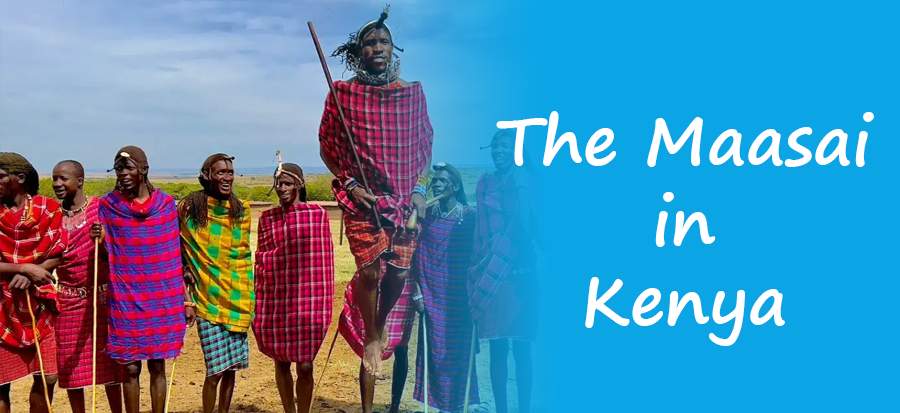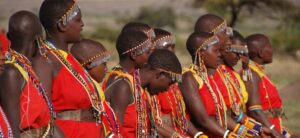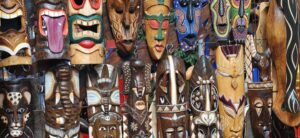When you think of Kenya, the vibrant culture of the Maasai in Kenya often comes to mind. Known for their striking red shukas, intricate beadwork, and powerful traditions, the Maasai aren’t just a symbol of Kenya—they’re living guardians of its cultural heritage. Their way of life, deeply rooted in harmony with nature, offers a glimpse into a world where tradition and identity remain unshaken by time.
You’ll find the Maasai in the vast savannas of East Africa, where their connection to the land is as enduring as their customs. From their iconic jumping dance to their unique social structure, the Maasai have preserved their traditions despite modern challenges. Their resilience and commitment to their heritage make them a fascinating example of cultural preservation in an ever-changing world.

History Of The Maasai in Kenya
The Maasai in Kenya trace their origins to the Nile Valley, migrating to East Africa around the 15th century. Due to its fertile pastures, they settled in the Great Rift Valley, spanning present-day Kenya and Tanzania.
By the 18th century, the Maasai became a dominant community known for their pastoral way of life. Their influence extended through trade, alliances, and military strength. They controlled vast territories and played a key role in shaping regional interactions.
In the late 19th century, European colonizers disrupted Maasai lands by introducing new boundaries and restrictions. Disease outbreaks, including rinderpest, and colonial land grabs reduced their once-vast territories. Despite these challenges, the Maasai have maintained their cultural identity and adapted to modern changes while preserving traditions.
Cultural Heritage And Traditions
The Maasai in Kenya embodies a rich cultural heritage deeply rooted in traditional practices. You can observe their traditions through their attire, spiritual beliefs, and strong connection to cattle.
#1. Traditional Attire
The Maasai’s clothing is vibrant and symbolic of their identity. Shúkà, the traditional Maasai attire, consists of bright red fabric, often adorned with intricate patterns. Men, women, and children wear beadwork, including necklaces, bracelets, and earrings. These beads signify status, wealth, and milestones, like marriage or warriorhood. The red color, predominantly used, conveys bravery and unity within the community.
#2. Spiritual Practices
The Maasai in Kenya follow a monotheistic belief system centered on Enkai, their god of nature, rain, and fertility. Rituals and prayers, often led by spiritual leaders (Laibons), are integral to their daily lives. Ceremonial songs and dances feature during blessings, initiations, or harvest celebrations. Sacred spaces, such as specific trees or hills, form the foundation of these practices, emphasizing their deep connection to natural environments.
#3. Cattle As A Way Of Life
Cattle symbolize wealth and sustenance in Maasai culture. Herds provide milk, meat, and traditional wealth used in dowries or communal exchanges. Their diet emphasizes milk mixed with blood, showcasing the essential role cattle play in sustenance. Herding practices align with seasonal migrations across grazing lands, ensuring ecological balance. For the Maasai, cattle are not just assets but spiritual connections, often included in blessings and rituals.
Challenges Facing The Maasai
The Maasai face several obstacles that threaten their traditional way of life and cultural identity. These challenges range from land disputes to the pressures of modernization.
#1. Land And Resource Issues
Your land and natural resources are vital to the Maasai’s pastoral lifestyle, yet they remain under constant threat. Government policies and land privatization in Kenya have reduced access to grazing areas, forcing many to abandon traditional herding practices. Conservation initiatives, such as the establishment of national parks, often result in displacement, leaving your community with limited options for sustenance. Resource competition with neighboring groups and environmental degradation further complicate survival in rural areas.
#2. Impact Of Modernization
Modern influences have significantly altered the Maasai’s traditional ways. The encroachment of urban development and introduction of formal education present opportunities but conflict with existing customs and social roles. Younger generations face pressure to adopt modern lifestyles, leading to a gradual erosion of traditional practices like oral storytelling and indigenous healing. Financial income sources, including tourism and employment outside the community, shift focus from herding to modern economic activities, challenging your core cultural values.
Efforts To Preserve Maasai Traditions
Preserving Maasai traditions is crucial for maintaining their cultural identity amidst modern challenges. Various measures focus on ensuring their customs endure for future generations.
#1. Community Initiatives
Local Maasai groups in Kenya actively organize educational programs to teach younger generations their language, rituals, and oral history. Elders play a key role by conducting storytelling sessions and mentoring youth. Many communities establish cultural centers to safeguard artifacts, traditional attire, and sacred objects. These centers serve as spaces for transmitting knowledge and hosting cultural events. Collaborations with NGOs have resulted in initiatives promoting sustainable herding practices and protecting grazing lands from privatization. By engaging in these efforts, the Maasai reinforce their ties to ancestral customs.
#2, Role Of Tourism
Cultural tourism provides a platform to showcase and sustain Maasai traditions. Visitors to Kenya often engage with Maasai communities to experience authentic practices like traditional dances, craftmaking, and storytelling. Revenue from these interactions supports community projects such as schools and healthcare facilities, indirectly bolstering cultural preservation. Maasai markets, which sell beadwork and handmade artifacts, offer global visibility for their craftsmanship while fostering economic independence. Tourism partnerships also highlight environmental stewardship, reinforcing the connection between Maasai traditions and conservation efforts.
The Maasai’s Role In Modern Kenya
The Maasai community plays an integral role in shaping modern Kenyan society. Their contributions extend beyond preserving traditions to promoting environmental conservation and representing Kenya’s cultural identity on the global stage.
#1. Cultural Ambassadors
The Maasai in Kenya serve as cultural ambassadors, symbolizing Kenya’s heritage worldwide. Through their apparel, traditional ceremonies, and performances, they attract thousands of visitors annually. Beadwork, songs, and dances, such as the adumu (jumping dance), feature prominently in global cultural showcases and festivals, cementing the Maasai’s role as icons of Kenyan culture.
Tourism initiatives often highlight Maasai communities, presenting their traditions as part of Kenya’s identity. By engaging with tourists, the Maasai bridge cultural gaps, promote understanding, and generate income for their communities. Their influence ensures that Kenya’s rich traditions remain vital on international platforms.
#2. Contribution To Conservation
The Maasai in Kenya contribute significantly to conservation, intertwining traditional practices with modern environmental strategies. Pastoral herding methods have long balanced resource use with ecological preservation, protecting habitats like the Mara-Serengeti ecosystem. Their symbiotic relationship with the environment helps maintain biodiversity and prevent overgrazing.
The Maasai collaborate with conservation organizations to participate in wildlife protection programs. Community conservancies created by the Maasai reduce human-wildlife conflict and safeguard migratory routes for species like elephants and wildebeests. Revenue from these initiatives supports sustainable livelihoods and education, ensuring conservation benefits align with community well-being.
Conclusion
The Maasai in Kenya stand as a symbol of resilience and cultural pride, offering a profound connection to Kenya’s heritage. Their ability to balance tradition with modern challenges is a testament to their strength and adaptability. By embracing innovative ways to preserve their customs, the Maasai continue to inspire global admiration.
As you reflect on their journey, it’s clear that the Maasai are more than just guardians of tradition—they’re a living legacy of harmony between culture, community, and nature. Their story reminds you of the importance of preserving the past while navigating the future.


